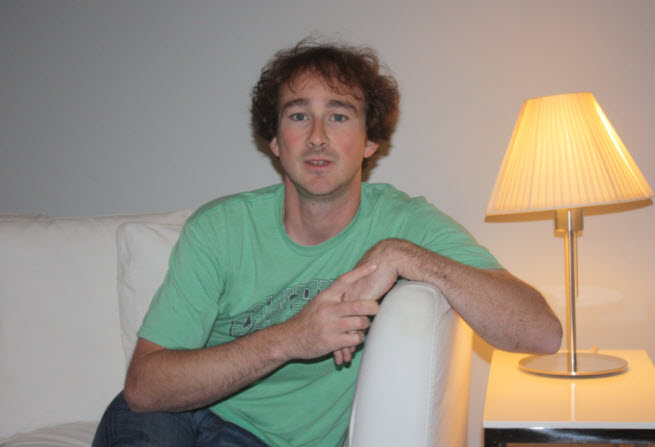The Halo first-person shooter series has always pushed the limit on graphics quality on Xbox consoles (and for the first two games, the PC). So when 343 Industries took over the $3 billion video game franchise from its original developer, Bungie, it started everything from scratch.
David Berger (pictured above) started as Halo 4’s technical director, leading the team of engineers whose job it was to bring Master Chief’s latest adventure to life in cinematic art quality. Once you start playing Halo 4, which debuts Tuesday for the Xbox 360, you’ll see that the 3D art, particularly for characters like Master Chief and his artificial intelligence sidekick, Cortana, has been elevated to a new level. Battle arenas are larger, and the physics is more refined as well, Berger says. But one of the main purposes of improving the graphics is to enhance the delivery of emotional performances of Master Chief and Cortana.
It’s always a risk to change something so iconic. But more than 46 million Halo games have sold over the past decade, and its fans are going to want something more than the same experience they’ve played before. We’ll find out soon if Berger’s team met the challenge. Here’s an edited transcript of our interview with Berger.
GamesBeat: What’s your role?
David Berger: I’m the development manager and technical director. All the engineers report through me. I’ve been at the studio since the beginning [of Halo 4]. It was me and Kiki [Wolfkill] that were the first people on the internal team. I’ve been at Microsoft for quite a while, almost 14 years. Once 343 was formed, I was basically there from the beginning. I was actually at FASA before that, doing all the MechWarrior stuff and Shadowrun.
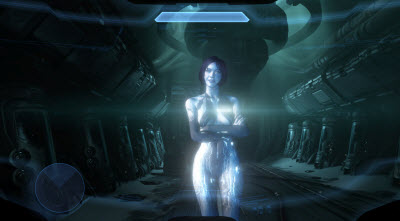 GamesBeat: From a technical view, how did you approach this? What did you want to improve or do differently?
GamesBeat: From a technical view, how did you approach this? What did you want to improve or do differently?
Berger: It’s always a great thing to start with a solid piece of technology that has produced multiple 90-rated games. What we really wanted to do was, first, learn the technology and then work with the creative side, especially art, and figure out where we were going to take things. We knew we wanted to push it forward. We focused on trying to get a lot more fidelity into the background and then also a lot of changes in the lighting model, to support Kenneth [Scott]’s artistic vision. We wanted to support the vision of the game as something that’s a lot more about storytelling and a more emotional feel. Those were some of the major places we focused on.
GamesBeat: You have made the human characters, like Cortana (above) less blocky.
Berger: Yeah. That’s another place we wanted to move the needle. Focusing on the facial performance, especially in the cinematics. Coming through with a full facial capture system instead of. … Most of the foundation for a lot of games is more about body [motion capture]. We did the full facial capture and allowed that to come through, which is another big place we wanted to improve.
GamesBeat: Human characters always seem to have a mask on.
Berger: Or a helmet, yeah.
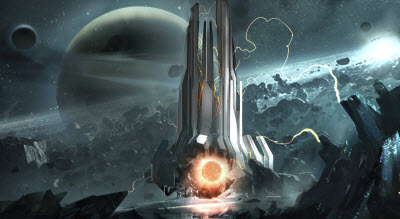 GamesBeat: And the aliens, you can’t really tell if their faces are accurately rendered. Are there some other things that have been improved, too? Are the levels or arenas a little bigger?
GamesBeat: And the aliens, you can’t really tell if their faces are accurately rendered. Are there some other things that have been improved, too? Are the levels or arenas a little bigger?
Berger: There’s definitely a lot more fidelity as far as just triangle counts in the levels. A lot of the things that we had to do to further move things, just from a graphical standpoint, meant having to do a lot of work in the collision and the physics system to support that extra geometry. Lighting. Materials. And then a lot of work to be able to up-res the environments and other major pieces. Then the facial system. A lot more of the systems around the general cinematics as well. And of course all the features that were needed to support the whole new enemy class, the Prometheans.
GamesBeat: Are there certain kinds of trade-offs you make with a console that’s as old as the 360? Are you prioritizing certain things over others?
Berger: Yeah, it’s a tight balance to walk. You do have a piece of hardware that’s been around for quite a while. You need to maintain your frame rate, maintain the play. That was one of the big challenges, to maintain the core of the sandbox gameplay while dialing up the graphical features. One of the things we always wanted to make sure of was that gameplay loop stays sacred. We couldn’t do anything to hurt it. We do, obviously, balancing of different scenes. You talk about enemy counts. You talk about different levels of detail on things to make sure that we can maintain that wall. You can pick and choose areas and places where you can do different things.
 GamesBeat: What does better physics actually get you as far as different kinds of gameplay?
GamesBeat: What does better physics actually get you as far as different kinds of gameplay?
Berger: Well, a lot of the things we did with physics weren’t necessarily around getting “better physics.” They were really about maintaining frame rate while having such an increased amount of polygons in the world. When you do your raycasting and you do your collision checks, you have that much more geometry you need to collide with. A lot of the rework was more optimization work, to continue to get all of the consistent play, the movement, the decal-ing, all of that, to work while we were increasing the fidelity of the background. That was the bulk of the work. It wasn’t there to necessarily to make better physics. It was there to maintain while still being able to have that increase in fidelity.
GamesBeat: You mentioned Metacritic ratings 90 and up. When you think about it that way, what was your task at hand? What did you have to do in order to target something like that?
Berger: I don’t think we personally really targeted that. I think what we wanted to do was focus on staying true to the core of Halo, while still being able to expand it and tell the stories that we wanted to. It was more like…if we can execute on this, that type of thing would follow. My mention of that comes from how it’s easier to start when you have a piece of technology that has delivered on that promise before, as opposed to a piece of technology that maybe hasn’t.
GamesBeat: To maintain that kind of rating these days, the challenge is you have to do more. You have to give the fans what they want and also give them something new.
Berger: Yeah, especially when you’re talking about sequels. I think that we’ve done a pretty good job with what we set out to do. Spartan Ops…being able to continue the storyline and tell the storyline past the campaign is one of the big strengths of Halo as a franchise. The fiction is really rich and a lot of fans really care about that. Spartan Ops is a huge play into being able to continue that fiction postlaunch. We’ve done a lot of things to push the needle forward and give the fans more of what they want. Any iteration, you just want it to be better, cleaner, more polished. That’s an expectation, especially when you’re on the same piece of hardware.
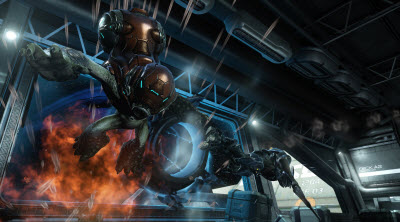 GamesBeat: Do you think graphics are a big part of this 90-rated experience?
GamesBeat: Do you think graphics are a big part of this 90-rated experience?
Berger: I think a perception is there. The graphic piece lends itself to the feel of the game. Clearly, great graphics make for great screenshots. They make for great videos. But the payoff is when you’re trying to emotionally tie somebody, the player, into the story and into the world. That’s the important piece with graphics. You can look at different games and the ways that they’re stylized. They may not be technologically impressive, but the way that they’ve brought it together sells the feel of the game. For me, that’s what comes from graphics. I don’t think we just set out to make “the best graphics possible.” We use graphics as a way to support that emotional piece of the game and tell a story.
GamesBeat: Are there some examples of raising the level of the graphics so that the storytellers or the gameplay folks can be more creative?
Berger: Graphics end up being, like I said, a tool for the designers and the artists to do what they want. You start layering graphics and animation, things like the facial capture system, and then you get the in-game vignettes, the cinematics. We need to deliver the tools for that, so they’re able to iterate and get their story and their gameplay fine-tuned. Generally, graphics are a piece of that toolkit. They’re used where the art director, the design director, the mission lead, or the environment lead feels that this is going to be a monumental piece or an epic moment. … When you come out and see this amazing vista with these great God rays and that kind of thing, there’s this awe of the world that we’re in. Or you can switch it to the emotion in Cortana’s face. Graphics tell two very different stories there, through the creatives, in a way that makes what they wanted to emphasize come forward.
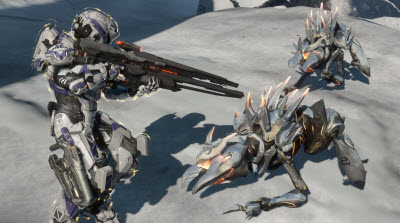 GamesBeat: What do you think about being able to maximize the Xbox 360’s potential? For a while, it seemed like everybody was learning how to make use of three cores at once. What’s it like now?
GamesBeat: What do you think about being able to maximize the Xbox 360’s potential? For a while, it seemed like everybody was learning how to make use of three cores at once. What’s it like now?
Berger: Like any console out there, you always have your learning curve before you start really mastering it, and then you just start getting better and better with it. It’s not just learning how to use the hardware and step it forward. It’s making those trade-offs based on what you now know the hardware can do better for your game, or how your software works with that hardware. Now you can start understanding how you’re going to customize and dial things, and what is going to hopefully make the most sense for the game that you’re making. The 360 has been an outstanding piece of hardware to make games on.
GamesBeat: What do you think about the end result, and maybe what fans will start to notice? What are they going to immediately see, and what might be some things that are more subtle?
Berger: More subtle. They’re immediately going to notice just the general graphical fidelity. The differences in lighting. It’s more of a contrasting lighting model, to be a little bit more emotionally driven… There are some other smaller features that are a bit more tech-driven in the game. We’ve added some lighting to the Forge mode which hasn’t existed before. That’s something that not too many people will notice right away. But then you start adding the amount of time that the content creators have put into the re-creation of the Covenant and the new character classes. The fidelity there is something that will be pretty impressive. Overall, I hope people notice that the core of the gameplay stayed true, and yet we took it in a good direction. We kept the fun factor up and told a really good story.
VentureBeat's mission is to be a digital town square for technical decision-makers to gain knowledge about transformative enterprise technology and transact. Learn More
